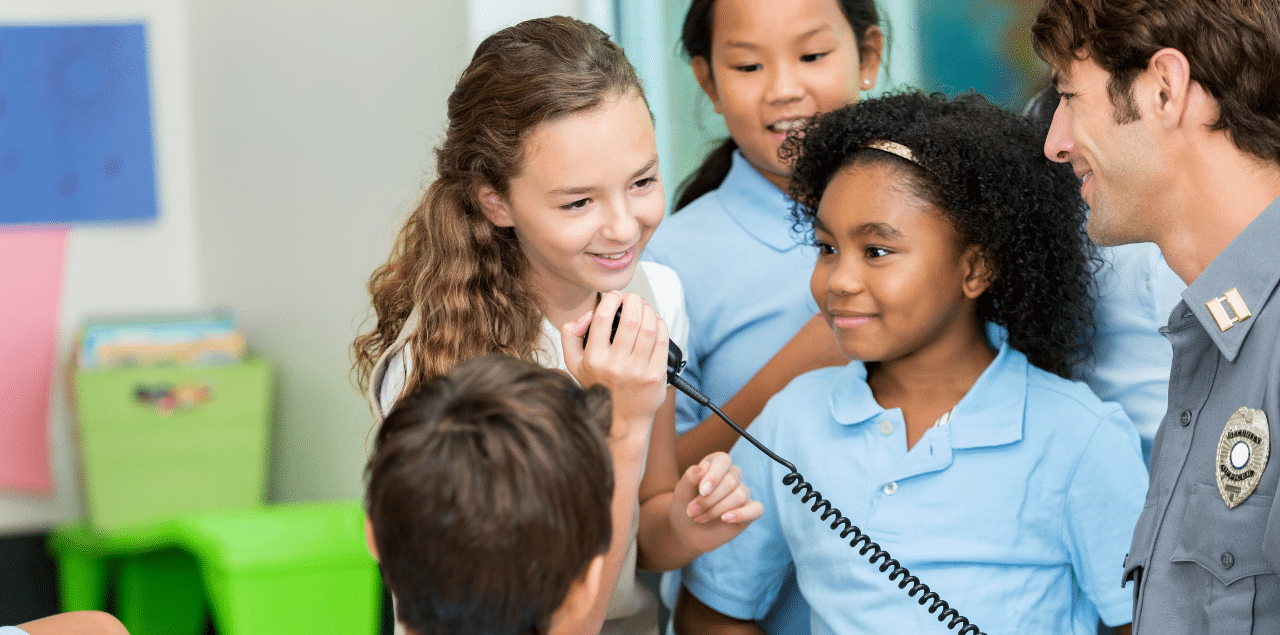The reality of active shooter events in schools can be difficult to even consider, let alone prepare for. However, like so many complex problems, simply pretending the issue doesn’t exist is not an option. Administrators are realizing that additional training and planning are required for their districts to be prepared and, just as there are different approaches to active shooter responses, the teaching methods used for each can also vary drastically.
A blended approach – which many schools have become familiar with – incorporates both in-person, hands-on training with a certified instructor and a digital eLearning curriculum, using each to reinforce lessons learned in the other. While the common methodology in the past mostly included in-person drills and instruction, blended learning for active shooter incidents offers a well-rounded approach to teaching life-saving skills. And when it comes to teaching active shooter response preparedness and reaction, the extra training and reinforcement provided by blended active shooter response training can make the difference in an emergency.
Traditional School Lockdowns
The traditional lockdown response instructs students and teachers to stay in classrooms, lock the door, close curtains and blinds, turn off lights, and hide low to the ground. This strategy resembles a 1980s-era Los Angeles Unified School District policy, implemented as a response to drive-by shootings and gang violence happening near the school.
Unfortunately, the majority of modern active shooter incidents at schools are nothing like drive-by shootings, gang violence, or any other types of emergencies that lockdowns were implemented to address. Yet, these policies remain in place in many districts, despite a lack of research on their overall efficacy. Often, a traditional school lockdown as a response to an active shooter isn’t just counterintuitive; it can be disastrous. Sheltering in place can train the flight instinct out of the individuals, leaving them vulnerable in un-barricaded rooms. Research has shown that students and staff need multiple strategy options that can be adapted to their ongoing situation instead of relying on a single response.
Multi-Option Strategies Empower Students & School Staff Alike
One of the most glaring issues with the lockdown approach to active shooters is that it is a one-size-fits-all solution. It emphasizes a response that is inflexible, so students and teachers are both taught to treat all active shooter events the same—even when each incident is unique.
Options-based training ingrains alternative actions that can be taken based on the circumstances, like when a student or teacher might be in a gym, hallway, or sports field and not able to participate in a traditional lockdown. Multi-option responses include enhanced lockdown procedures, in addition to other response options.
ALICE Blended Training: Solutions for Multiple Concerns
Just as the multi-option response supplemented and added to the strategies of a traditional lockdown, ALICE Training ®further expands on training capabilities. Using the evidence-based methodology and blended training methods, ALICE tackles the issues of outdated response tactics and poor implementation head-on with multi-option active shooter responses that are reinforced with both in-person and eLearning lessons. These blended training modules and lessons are intuitive, and therefore, easier to understand and retain than other systems.
Strategies Proven by Evidence
Unlike the traditional school lockdown, largely based on tradition and rarely tailored to individual schools or situations, ALICE Training ®teaches strategies that are evidence-based and adaptable. That adaptability also means that ALICE techniques will continue to evolve and improve with further study.
Responses Based on Circumstances
Emergency response training naturally incorporates details about individual situations, and active shooter events should be no different. For example, in the event of a fire, students, teachers, and school staff have been instructed to respond differently based on the situations, as well as being taught various assessment techniques and response strategies, such as tapping door handles to check the temperature and crawling low to the ground to avoid smoke inhalation.
Likewise, ALICE Training ®strongly emphasizes situational awareness and specifically includes instruction on assessment and communication to help those in an active shooter event make better-informed decisions. Your district’s faculty, staff, and students will learn to adapt their response based on the unique situation instead of relying on a single option response for all active shooter incidents.
Blended Training for Effective Instruction
Blended training is central to the effectiveness of ALICE, although it is widely underutilized in other training systems. Like the other aspects of active shooter training that ALICE brings into the current era, blended training is simply updating and modernizing response options to improve safety across the district. ALICE Training ®uses a trauma-informed approach, helping to improve comprehension and retention without traumatizing participants.
Lesson Plans for Students K-12
Another key element of ALICE Training ®is that lessons are age- and ability-appropriate and tailored to meet the capabilities and needs of students in specific grade levels. The content, exercises, and lesson plans are trauma-informed and designed to be suitable both emotionally and physically for the students they target, helping to increase retention and decrease negative emotional outcomes.
Additionally, ALICE Training ®includes modules for teachers and specialized school staff, providing training both for emergency response and student interaction that is grade-level appropriate. This holistic approach to school safety helps the entire district reinforce the lessons learned in ALICE Training ®, which can be accessed by stakeholders of all ages and abilities.
Helping Students Feel Safer
Talking to students about an active shooter event can make all the difference in those precious few minutes between when the threat presents itself and help arrives. ALICE’s blended training offers research-based strategies that empower students to make better decisions in dangerous and life-threatening situations. And, recent research suggests that ALICE’s active shooter training causes no more anxiety than other emergency drills, such as tornado and fire drills. Learn more about Navigate360’s ALICE Training ®and how it can improve safety within your school district by contacting us today.




